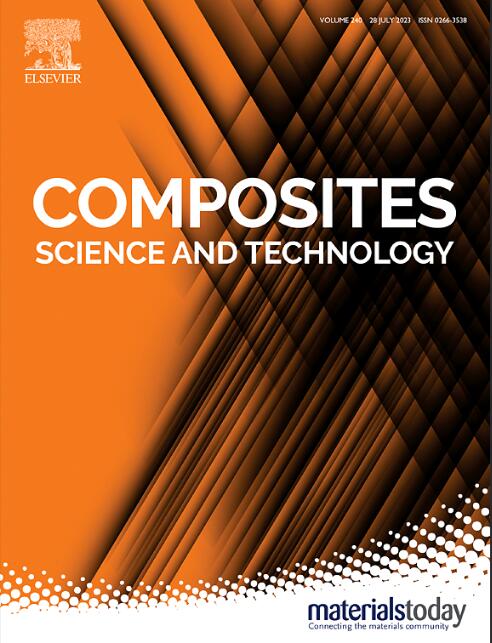Structure tensor-based analysis method for quantitative assessment of fibre waviness in fibre-steered laminates manufactured by continuous tow shearing
IF 9.8
1区 材料科学
Q1 MATERIALS SCIENCE, COMPOSITES
引用次数: 0
Abstract
Producing fibre-steered laminates require the use of automated tape deposition techniques. Although the Automated Fibre Placement (AFP) is the state-of-the-art fibre steering technology, its tape handling mechanism causes various defects such as tape buckling. Continuous tow shearing (CTS) was developed to eliminate such defects by in-plane shearing prepreg tapes, demonstrating superior fibre steering quality. However, the inherent fibre misalignments within the tape material may result in micro-level fibre waviness during shearing. It is important to measure the fibre waviness level in CTS-steered prepreg layups or laminates.
The existing fibre waviness measuring processes requires high-fidelity microscope images, limiting scanning area and processing time. This paper presents a new method utilising Structure Tensor Analysis (STA) for 100 mm wide, CTS-steered prepreg tapes scanned using a contact image sensor. The effects of the processing parameters of the STA on the accuracy of the analysis result were investigated, by comparing the results against microscopic analysis using the High Resolution Misalignment Analysis (HRMA). The analysis results have demonstrated that the STA has the potential for fast and cost-effective fibre-waviness inspection to verify layup quality of fibre-steered layups and laminates.

基于结构张量的连续剪切纤维导向层压板纤维波纹度定量评价方法
生产纤维导向层压板需要使用自动胶带沉积技术。虽然自动纤维放置(AFP)是最先进的纤维导向技术,但其胶带处理机制会导致胶带屈曲等各种缺陷。连续牵引剪切(CTS)是一种通过面内剪切预浸料带来消除这些缺陷的方法,具有优异的纤维转向质量。然而,在剪切过程中,胶带材料内部固有的纤维错位可能导致微观水平的纤维波纹。在cts导向的预浸料层或层压板中,测量纤维的波纹度是很重要的。现有的纤维波纹度测量方法需要高保真的显微镜图像,限制了扫描面积和处理时间。本文提出了一种利用结构张量分析(STA)的新方法,用于使用接触式图像传感器扫描100mm宽的cts导向预浸料带。通过与高分辨率错位分析(High Resolution Misalignment analysis, HRMA)的显微分析结果进行比较,研究了STA处理参数对分析结果精度的影响。分析结果表明,STA具有快速和经济有效的纤维波纹度检测的潜力,可以验证纤维导向层合板和层压板的层合质量。
本文章由计算机程序翻译,如有差异,请以英文原文为准。
求助全文
约1分钟内获得全文
求助全文
来源期刊

Composites Science and Technology
工程技术-材料科学:复合
CiteScore
16.20
自引率
9.90%
发文量
611
审稿时长
33 days
期刊介绍:
Composites Science and Technology publishes refereed original articles on the fundamental and applied science of engineering composites. The focus of this journal is on polymeric matrix composites with reinforcements/fillers ranging from nano- to macro-scale. CSTE encourages manuscripts reporting unique, innovative contributions to the physics, chemistry, materials science and applied mechanics aspects of advanced composites.
Besides traditional fiber reinforced composites, novel composites with significant potential for engineering applications are encouraged.
 求助内容:
求助内容: 应助结果提醒方式:
应助结果提醒方式:


